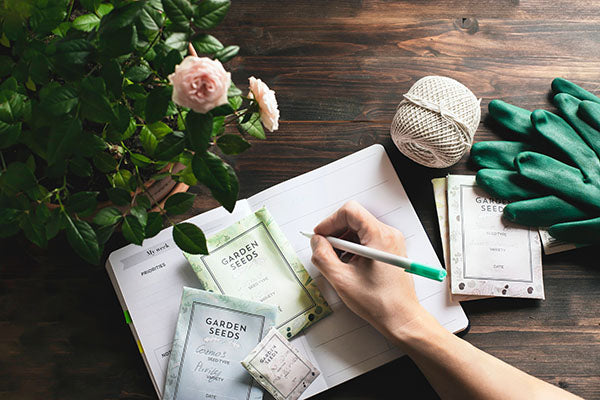How to keep a garden notebook

If you’re struggling to remember which bed you planted the onions in last, or the name of a particular variety of perennial that did well, perhaps this is the year you start your gardening journal.
You could use a simple exercise book or find a lovely notebook book that’s a pleasure to use. A ring binder with pockets for shoving seed packets or labels into and sections for calendar pages and a place for photographs works well too.
It’s useful to examine your garden when everything is in full growth recording what is working and what isn’t, so that when you want to make changes in winter you’ll have your notes. A garden diary also helps to remind you about things such as putting a grease band around the plum tree trunks next autumn to stop aphids. Keeping a diary is particularly useful for vegetable gardeners. My stepfather meticulously recorded his allotment gardening, noting the different seeds he bought and how well the different varieties did, when he seeded and transplanted them and when they were harvested, with diagrams of the beds for crop rotation.
You might make careful daily notes or just monthly or seasonal observations, the important thing is to look and record your activities. This can include when you applied fertilizer, and what was used; the full names of new plants, details of when plants bloom and successes and failures. Whilst blogs and Instagram posts are a user-friendly way of charting your horticultural efforts, keeping a print diary is satisfying and useful for flicking back through to see how things have changed over the years.











